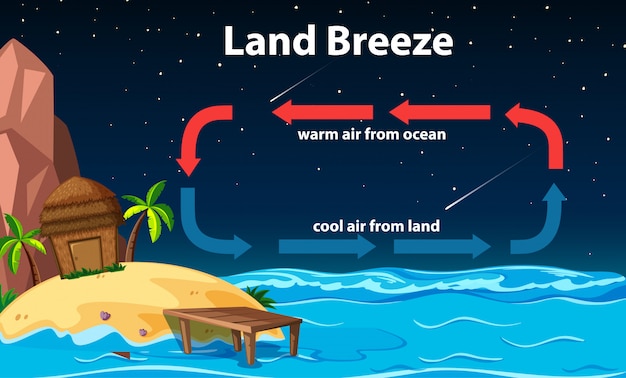Fascinating Facts about Tsunamis for Kids

Tsunamis are giant ocean waves that can cause a lot of damage.
Tsunamis are usually caused by underwater earthquakes or volcanic eruptions.
A tsunami is not just one wave, but a series of waves that can last for hours.
The word tsunami comes from the Japanese words tsu (harbor) and nami (wave).
Tsunamis can travel as fast as a jet plane, reaching speeds of up to 500 miles per hour.
The height of a tsunami wave can vary from a few inches to over 100 feet.
Tsunami waves may look like a normal tide at first, but they can quickly grow in height and power.
The biggest recorded tsunami in history occurred in 1958 in Alaska, with waves reaching a height of 1,720 feet.
Tsunamis can travel across entire oceans, from one continent to another.
Not all earthquakes result in tsunamis, only the ones that occur under the ocean or near coastal areas.
Even small tsunamis can be dangerous, so it is important to stay away from the coast during an alert.
Tsunamis can cause widespread flooding, destroying homes, buildings, and infrastructure.
The force of a tsunami can wash away vehicles, trees, and even entire villages.
Tsunamis can also cause long-term damage to the environment and disrupt ecosystems.
The sound of a tsunami can be compared to a thundering train or a roaring jet engine.
Tsunamis can be detected by buoys and monitoring systems that measure changes in sea level.
Tsunamis can occur in any ocean around the world, but they are most common in the Pacific Ocean.
The Indian Ocean tsunami of 2004 was one of the deadliest natural disasters in history, claiming the lives of over 230,000 people.
Tsunami waves can travel across the ocean without losing much speed or energy.
The first sign of an approaching tsunami is often a rapid and unusual retreat of the ocean water.
Tsunamis can create strong currents and dangerous rip tides, even in areas far from the initial impact zone.
It is important to listen to official warnings and follow evacuation orders during a tsunami alert.
Tsunamis can affect marine life, causing large numbers of fish and other sea animals to wash up on shore.
The height and impact of a tsunami can vary depending on the shape of the coastline and the depth of the ocean floor.
Tsunamis can be devastating for coastal communities, but there are measures that can be taken to reduce the risk, such as building seawalls and creating tsunami evacuation plans.
Tsunamis are not only dangerous in the ocean, but they can also travel up rivers and estuaries, causing flooding inland.
The energy released by a tsunami is equivalent to the explosion of millions of tons of TNT.
Tsunamis can travel thousands of miles, crossing entire oceans before reaching land.
The height and power of a tsunami wave decrease as it moves away from the source.
The Pacific Tsunami Warning Center in Hawaii is responsible for monitoring and issuing alerts for tsunamis in the Pacific Ocean.
Tsunamis can cause landslides and trigger secondary hazards, such as fires and contaminated water sources.
Tsunamis are more likely to occur in the Ring of Fire, an area around the Pacific Ocean known for its high seismic activity.
The energy of a tsunami wave can be felt deep below the ocean surface.
Tsunamis can happen at any time of the year, but they are most common during certain seasons.
The impact of a tsunami can be felt for years, with communities needing to rebuild and recover.
Tsunamis have the potential to impact not only coastal areas but also islands and low-lying regions.
The first recorded tsunami dates back to 479 BC in Greece.
Tsunamis can cause erosion, changing the shape and landscape of coastlines.
Animals, such as birds and elephants, have shown signs of sensing approaching tsunamis and moving to higher ground.
Tsunamis are not tidal waves caused by the moon’s gravity; they are generated by seismic activity.
Tsunamis can travel across the entire length of the ocean in just a few hours.
The height of a tsunami wave can exceed the height of a five-story building.
Tsunamis can cause long-lasting psychological effects on survivors, such as post-traumatic stress disorder.
The deadliest recorded tsunami in history occurred in 2004 in the Indian Ocean, affecting countries like Indonesia, Thailand, and Sri Lanka.
While tsunamis are natural disasters that can cause devastation, understanding and preparedness can help save lives and minimize damage.